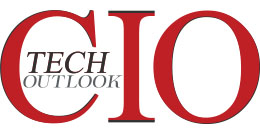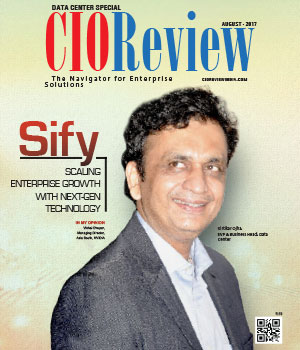
Driving Innovation through Cross-Sectoral Leadership
Rajesh Revankar, CEO, DTC Infotech
 Rajesh Revankar, CEO, DTC Infotech, in an interaction with CIOTechOutlook, shared his insights on building cross-sector collaboration in accelerating innovation. He talked about creating common values to align the public, private, and non-profit sectors using a structured framework. He also spoke about patterns for overcoming cultural and operational barriers, forums for establishing ethical data-sharing platforms, and methodologies addressing societal outcomes with a flexible community feedback loop.
Rajesh Revankar, CEO, DTC Infotech, in an interaction with CIOTechOutlook, shared his insights on building cross-sector collaboration in accelerating innovation. He talked about creating common values to align the public, private, and non-profit sectors using a structured framework. He also spoke about patterns for overcoming cultural and operational barriers, forums for establishing ethical data-sharing platforms, and methodologies addressing societal outcomes with a flexible community feedback loop.
With a strong foundation in emerging technologies and business strategy, Rajesh Revankar is a visionary entrepreneur and the CEO of DTC Infotech and UnifyNow AI Labs. He brings decades of experience in delivering AI-driven, scalable solutions across industries, with expertise spanning AI, Industrial IoT, and quantum computing.
How can leaders leverage cross-sector collaboration to accelerate innovation? What models or frameworks are most effective in aligning goals across public, private, and nonprofit sectors?
The most important aspect of leveraging cross-sector collaboration is establishing common values where public interests, private sector efficiency, and non-profit advocacy can be aligned and blended. The innovation can accelerate when diverse stakeholders come together for a complementary stance to define policy frameworks.
One effective collaboration approach is the collective impact framework, where participating organizations share a common agenda, identify shared measures to track progress, and maintain communication between stakeholders. Another approach is a triple helix model, where academia, industry, and governments build a framework to drive the knowledge-based innovations.
Another model of collaboration is a public-private partnership, which involves creating structured agreements to establish a collaborative framework through shared investment, risk and resource pooling. Public-private partnerships not only foster cross-sector collaboration but also significantly accelerate innovation by ensuring stronger stakeholder commitment. Moreover, these frameworks can incorporate incentive mechanisms while preserving the autonomy of each participating sector.
What leadership qualities are essential to succeed in cross-sectoral environments? How can leaders foster a culture of innovation across organizations with diverse operational mindsets?
The cross-sectional leaders from diverse industries may require the development of an adaptive intelligence framework. This involves understanding varied goals, practicing empathy and diplomacy, and ensuring communication is clear, transparent, and based on shared knowledge. Furthermore, leaders must demonstrate intelligent and systems thinking, which allows them to view the bigger picture across key dimensions such as social, economic, political, and policy domains. This holistic perspective supports the development of robust cross-sector frameworks.
It is crucial to engage with individuals from different sectors who can share knowledge and skills, and help to develop interdisciplinary teams that support effective operational models. In terms of leadership, transformational leadership can help to define clear metrics and establish incentive structures across sectors to foster mutual understanding. These elements are critical for driving innovation within cross-sector collaborative frameworks.
What are the biggest barriers to cross-sector innovation, and how can they be overcome?
In the context of cross-border innovation driven by cross-sector leadership, one of the most significant challenges and barriers is the presence of cultural disconnects among the various stakeholders. For instance, cultural disconnects between bureaucratic and startup organizations, or incentive disconnects between profit-driven and social development, introduce substantial challenges to collaboration. Other barriers to collaboration relate to political and funding cycles, intellectual property issues, and data ownership.
To overcome these barriers, it is important to develop neutral agencies and innovation hubs that can support collaborations and put mechanisms in place to mediate and resolve conflicts. It can be beneficial to develop Key Performance Indicators (KPIs) and formalise relationships through the Memorandums of Understanding (MOUs) or a joint governance board, which can also develop trust, clarify roles between stakeholders.
How can technology platforms or data sharing agreements be structured to support collaborative innovation?
The digital platforms have the potential to create interoperable models that enable secure and ethically governed connections between disparate systems. Such models promote the adoption of best practices focused on building data trust. Ownership, confidentiality, usage rights, and privacy can raise concerns when data is exchanged or shared by various parties. For instance, banking and payment platforms such as Unified Payments Interface (UPI). These platforms give a seamless connection for all sectors using structured APIs. Moreover, utilizing blockchain technologies for integration provides transactable and auditable access to data between partners, with transparency and trust. Together, these systems create a solid foundation for innovation and collaboration across various sectors.
How can organizations cultivate talent that thrives in cross-sectoral leadership roles? What role does continuous learning play in equipping leaders to navigate multiple sectors?
Leaders must remain in touch with ongoing regulatory trends and emerging technologies trends, which allows them to contribute to social equity concerns. These cross-sector mentorship models enhance understanding of the realities and perspectives of different stakeholders. It is crucial to identify and recruit SMEs with a purposeful competency to lead initiatives towards shared environmental and technical challenges. In addition, it is important to demonstrate a culture of continuous learning in this rapidly evolving environment.
The efficacy of micro-learning platforms, executive education focused on public policy and social entrepreneurship, and real-world immersion projects, such as capstone projects, can bring an impact on adaptive capacity. These approaches cultivate competencies and provide skills needed for being a cross-sector leader, which can ultimately build the change that can create meaningful outcomes across sectors.
How can cross-sector innovation be measured effectively in terms of societal impact? What are some examples of sustainable innovations that were only possible through cross-sector collaboration?
Deliberate activities and commitments related to the Sustainable Development Goals (SDGs) advance a wide range of global priorities or issues, such as quality education, gender equality, clean water and sanitation, climate action, sustainable cities and communities, responsible consumption and production, equality, and peace and justice. Greater attentiveness towards community feedback loops is also crucial as they are an essential element of measuring the actual impact of cross-sector innovation.
It is also imperative to place greater emphasis on community feedback loops, which play a critical role in measuring the real impact of cross-sector innovation. Rather than relying solely on traditional metrics such as Social Return on Investment (SROI), evaluation should incorporate dynamic, participatory insights from the communities being served. For instance, India’s Aadhaar rollout. This initiative catalyzes government agencies and policymakers, private technology companies, and civil society into collaboration in a common framework.
Another notable instance is the Smart City initiative, where those involved in urban planning, technology organizations, and community-oriented individuals and groups co-create digital infrastructure that builds sustainable cities and development. Moreover, during COVID, the nation was able to research, develop, and deliver a vaccine. This collaboration enables public sector funding combined with private sector R&D and the involvement of healthcare and pharmaceutical companies, which has led to rapid innovation and product development.
CIO Viewpoint
AI Appreciation Day: Powering Smart Factories,...
By Janifha Evangeline, Editor, CIOTechOutlook
Why Foolproof Facial Recognition Is Key Against...
By Joseph Sudheer Thumma, Global CEO & MD, Magellanic Cloud
National Technology Day 2025: Powering Progress...
By CIOTech Outlook Team
CXO Insights
Scalable and Cost-Effective Load Management...
By Shibu Paul, Vice President, International Sales, Array Networks
Why A Data First Approach Could Be Your...
By Geetha Ramamoorthi, Managing Director, India, KBR Inc
A Short Guide for Data-driven and...







